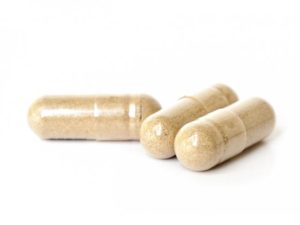 A recent study pooled the data from over a million Europeans and Americans and found that higher levels of leisure-time physical activity was associated with a reduced risk of developing cancer in 13 of the 26 cancers looked at.
A recent study pooled the data from over a million Europeans and Americans and found that higher levels of leisure-time physical activity was associated with a reduced risk of developing cancer in 13 of the 26 cancers looked at.
For that group of 13 cancers, the cancer risk reduction ranged from 10% to 42%. And most of these associations (leisure-time physical activity and lower risk of cancer) were evident regardless of body size or smoking history. Bottom line: getting active may lower your cancer risk.
From Science Daily: Physical activity associated with lower risk for many cancers
Higher levels of leisure-time physical activity were associated with lower risks for 13 types of cancers, according to a new study published online by JAMA Internal Medicine. Physical inactivity is common, with an estimated 51 percent of people in the United States and 31 percent of people worldwide not meeting recommended physical activity levels. Any decrease in cancer risk associated with physical activity could be relevant to public health and cancer prevention efforts.
Steven C. Moore, Ph.D., M.P.H., of the National Cancer Institute, Bethesda, Md., and coauthors pooled data from 12 U.S. and European cohorts (groups of study participants) with self-reported physical activity (1987-2004). They analyzed associations of physical activity with the incidence of 26 kinds of cancer.The study included 1.4 million participants and 186,932 cancers were identified during a median of 11 years of follow-up.
The authors report that higher levels of physical activity compared to lower levels were associated with lower risks of 13 of 26 cancers: esophageal adenocarcinoma (42 percent lower risk); liver (27 percent lower risk); lung (26 percent lower risk); kidney (23 percent lower risk); gastric cardia (22 percent lower risk); endometrial (21 percent lower risk); myeloid leukemia (20 percent lower risk); myeloma (17 percent lower risk); colon (16 percent lower risk); head and neck (15 percent lower risk), rectal (13 percent lower risk); bladder (13 percent lower risk); and breast (10 percent lower risk). Most of the associations remained regardless of body size or smoking history, according to the article. Overall, a higher level of physical activity was associated with a 7 percent lower risk of total cancer.
Physical activity was associated with a 5 percent higher risk of prostate cancer and a 27 percent higher risk of malignant melanoma, an association that was significant in regions of the U.S. with higher levels of solar UV radiation but not in regions with lower levels, the results showed.
The authors note the main limitation of their study is that they cannot fully exclude the possibility that diet, smoking and other factors may affect the results. Also, the study used self-reported physical activity, which can mean errors in recall."These findings support promoting physical activity as a key component of population-wide cancer prevention and control efforts," the authors conclude.

 As we know, chronic inflammation is linked to cancer and other diseases. It is long-term persistent low-grade inflammation, and it has a "wear and tear" effect on the body. What causes chronic inflammation? Being overweight or obese, sedentary lifestyle, Western (low fiber, high processed foods and meat) diet, chronic illnesses, viruses or bacteria (e.g., gum disease), smoking, air pollution, stress, excessive alcohol intake. It often does not have symptoms, but doctors can test for C-reactive protein levels (CRP), which increase when the body is inflamed. So you absolutely want to lower chronic inflammation if you can.
As we know, chronic inflammation is linked to cancer and other diseases. It is long-term persistent low-grade inflammation, and it has a "wear and tear" effect on the body. What causes chronic inflammation? Being overweight or obese, sedentary lifestyle, Western (low fiber, high processed foods and meat) diet, chronic illnesses, viruses or bacteria (e.g., gum disease), smoking, air pollution, stress, excessive alcohol intake. It often does not have symptoms, but doctors can test for C-reactive protein levels (CRP), which increase when the body is inflamed. So you absolutely want to lower chronic inflammation if you can. Many probiotic manufacturers say that their product has all sorts of wonderful health benefits in people eating that particular probiotic, but is the evidence there? Finally, now there is a
Many probiotic manufacturers say that their product has all sorts of wonderful health benefits in people eating that particular probiotic, but is the evidence there? Finally, now there is a  The researchers go overboard in their claims of what this study shows (after all, only 15 men were in the study, their blood pressure was only slightly elevated, and they were studied only for a short time). But.....what this study does show is that tart cherry juice seems to have some health benefits, such as lowering blood pressure for a while. Even though the researchers received funding from the Cherry Marketing Institute, it doesn't change the fact that cherries are considered healthy foods to eat. Montmorency tart cherries (MCs) are high in numerous phytochemicals (which have health benefits), including flavonoids (isorhamnetin, kaempferol, quercetin, catechin, epicatechin, procyanidins, and anthocyanins).
The researchers go overboard in their claims of what this study shows (after all, only 15 men were in the study, their blood pressure was only slightly elevated, and they were studied only for a short time). But.....what this study does show is that tart cherry juice seems to have some health benefits, such as lowering blood pressure for a while. Even though the researchers received funding from the Cherry Marketing Institute, it doesn't change the fact that cherries are considered healthy foods to eat. Montmorency tart cherries (MCs) are high in numerous phytochemicals (which have health benefits), including flavonoids (isorhamnetin, kaempferol, quercetin, catechin, epicatechin, procyanidins, and anthocyanins). This study found that people with high red meat intake, combined with low fruit and vegetable intake and a poor overall diet (which was found most frequently in males of low socioeconomic status) had biological markers indicating accelerated aging and poor renal function (early indicators of chronic kidney disease). Bottom line: eat less red meat, more whole grains, more fruits and vegetables for your health. From Medical Xpress:
This study found that people with high red meat intake, combined with low fruit and vegetable intake and a poor overall diet (which was found most frequently in males of low socioeconomic status) had biological markers indicating accelerated aging and poor renal function (early indicators of chronic kidney disease). Bottom line: eat less red meat, more whole grains, more fruits and vegetables for your health. From Medical Xpress: Study after study finds negative effects on the brain from playing football - here it is one season of high school football resulting in measurable brain changes. None of these players had a concussion during the season, and so the negative effects were from subconcussive head impacts or hits. Interestingly, those special helmets they wore to measure impacts showed no relationship with what the brain scans showed - so the helmets were basically useless in measuring subconcussive impacts. From Science Daily:
Study after study finds negative effects on the brain from playing football - here it is one season of high school football resulting in measurable brain changes. None of these players had a concussion during the season, and so the negative effects were from subconcussive head impacts or hits. Interestingly, those special helmets they wore to measure impacts showed no relationship with what the brain scans showed - so the helmets were basically useless in measuring subconcussive impacts. From Science Daily: We're surrounded by hormone disrupting chemicals (endocrine disruptors) in daily life - in plastics, personal care products, pesticides, food containers, plastic toys, etc.
We're surrounded by hormone disrupting chemicals (endocrine disruptors) in daily life - in plastics, personal care products, pesticides, food containers, plastic toys, etc. Did you ever wonder about all the consumer products that have fragrances in them and whether they are safe to use? Think of all the fragrances in personal care products and perfumes, in air fresheners, scented soaps, cleaning products, scented candles, even laundry detergents, and scented dryer sheets.
Did you ever wonder about all the consumer products that have fragrances in them and whether they are safe to use? Think of all the fragrances in personal care products and perfumes, in air fresheners, scented soaps, cleaning products, scented candles, even laundry detergents, and scented dryer sheets.